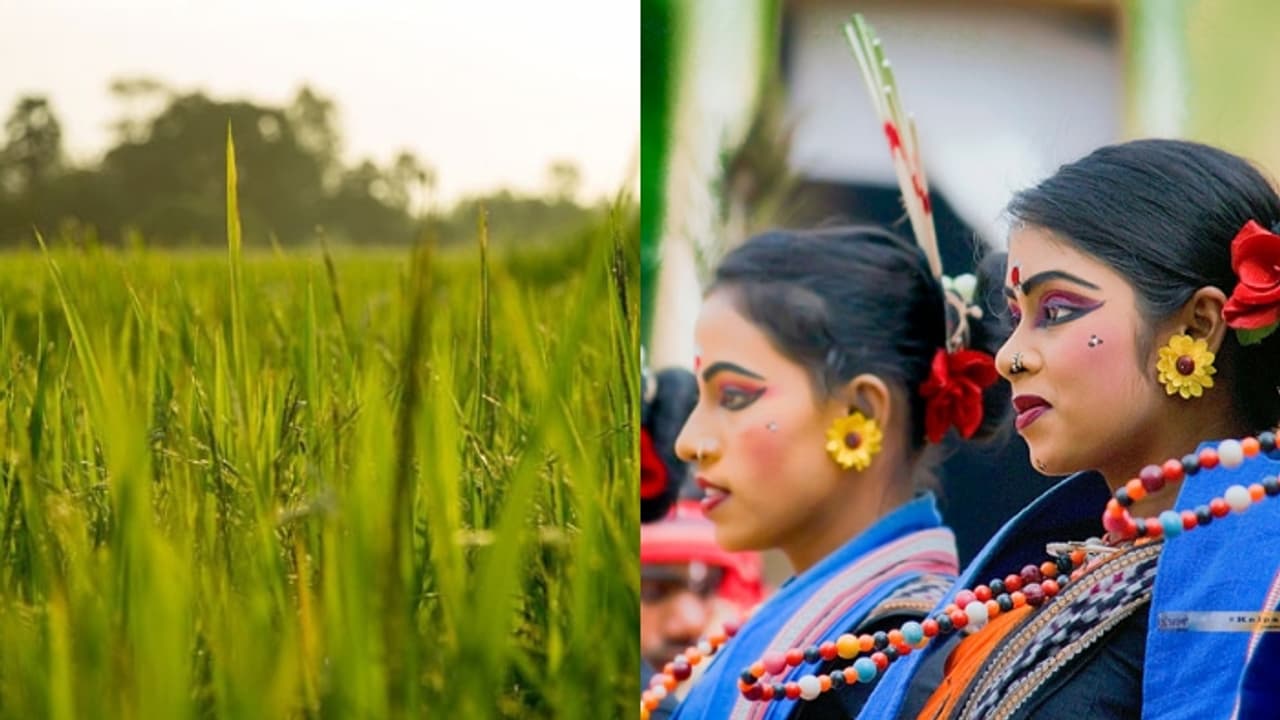August and September mark the arrival of Nuakhai, which is celebrated not only in western Odisha region comprising Kalahandi, Sambalpur, Balangir, Bargarh and Sundargarh, the festival is also celebrated across areas of Jharkhand
Ever heard of this festival before?
Well, this not-so-common festival is celebrated significantly as their harvest jamboree in the western Odisha with great dedication and joy.
Also referred to as Nuakhai Parab or Nuakahi Bhetghat, it is celebrated a day after Ganesh Chaturthi every year.
Interestingly, the festival's literal translation is "new food" where nua means new and khai means food.
Often compared to Tamil Nadu's Onam, which also is a celebration of fresh harvest, Nuakhai is, understandably, of immense significance for the agricultural community.
August and September mark the arrival of Nuakhai, which is celebrated not only in western Odisha region comprising Kalahandi, Sambalpur, Balangir, Bargarh and Sundargarh, the festival is also celebrated across areas of Jharkhand.
Celebrated both at the community and domestic levels, the rituals of Nuakhai are first observed at the temple of the reigning deity of the area or before the village deity. Later, the devotees worship in their respective homes and offer rituals to their domestic deity and to Lakshmi, the deity of wealth in Hindu tradition. People wear new clothes for the occasion, which is common for almost all Hindu festivals.
Elaborating on the details of the festival, we come across its tradition of offering the nua to the presiding deity, after which the eldest member of the family distributes nua to other members of the family. After taking the nua, all junior members of the family offer their regards to the elders, followed by the nuakhaijuhar, which is the exchange of greetings with friends, well wishers and relatives symbolising unity.
Nuakhai is an occasion for people to put their differences to rest and start relationships afresh.
The origins of the festival date all the way back to the Vedic ages, the first records of the existence of which was believed to be from the 12th century when a certain Raja Ramai Deo had seen agriculture as an important entity in maintaining the cohesiveness of a societal arrangement.
The festival is observed by nearly all the major tribes in central and eastern India, with a minor difference in nomenclature and is associated with nine primary colours which in turn are assigned to nine different rituals which include :
- Beheren (announcement of a meeting to set the date),
- Lagna dekha (setting the exact date for partaking of new rice),
- Daka haka (invitation),
- Sapha sutura and lipa puchha (cleanliness),
- Ghinabika (purchasing),
- Nua dhankhuja (looking for the new crop),
- Bali paka (final resolve for Nuakhai by taking the prasad (the offering) to the deity),
- Nuakhai (eating the new crop as Prasad after offering it to the deity, followed by dancing and singing),
- Juhar bhet (respect to elders & gift transfers) and its preparation begin 15 days in advance.
Despite having lost some of its enormity and variety with the passage of time, Nuakhai continues to be an occasion which endorses the patrimonial nature of the Sambalpuri culture and society.
